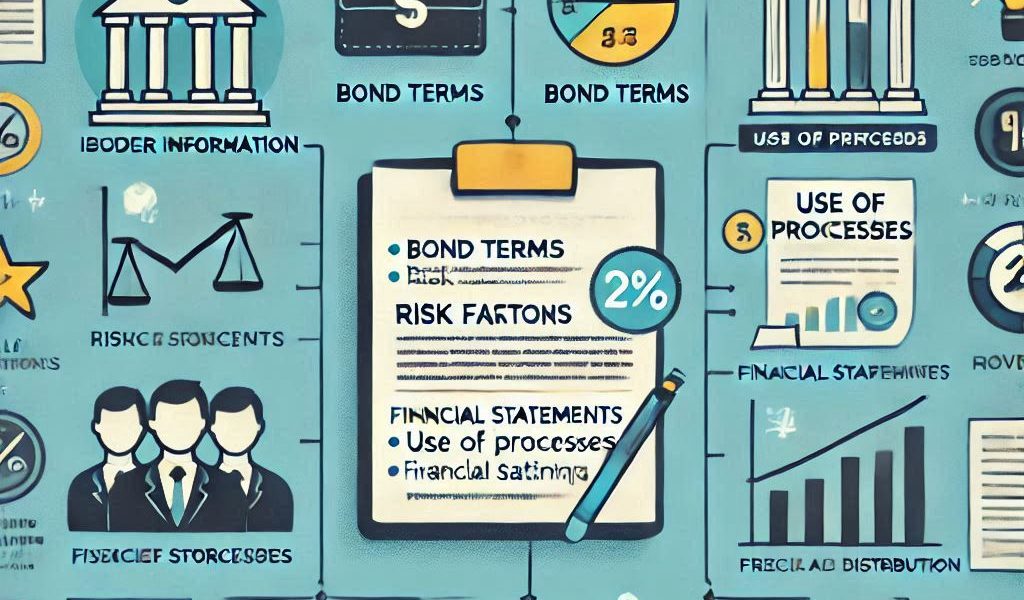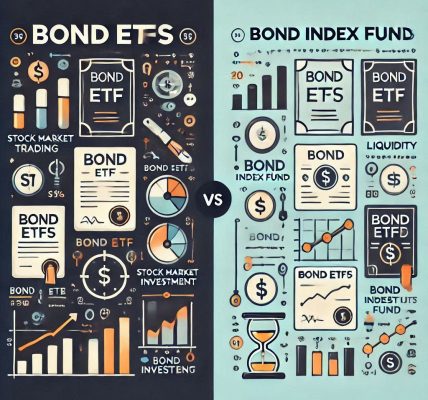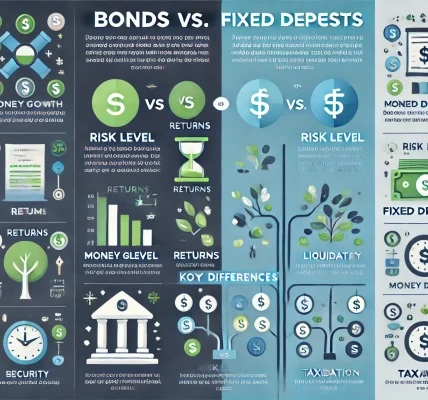For new investors, understanding a bond prospectus can seem like a daunting task. However, a bond prospectus is a crucial document that contains valuable information about a bond offering. Whether you’re considering purchasing a corporate bond, a government bond, or a municipal bond, knowing how to read a bond prospectus will help you make informed investment decisions.
In this beginner’s guide, we’ll break down the key sections of a bond prospectus, explain what each section means, and provide you with the tools you need to evaluate a bond’s potential.
What is a Bond Prospectus?
A bond prospectus is a formal legal document that provides detailed information about a bond issue. It is prepared by the issuer of the bond (a corporation, government, or municipality) and filed with the Securities and Exchange Commission (SEC) or the relevant regulatory body. The bond prospectus aims to give potential investors the necessary facts to evaluate the investment’s risks and rewards before they make a decision.
The bond prospectus can come in several formats, but it generally contains the same core information, such as the bond’s terms, risks, financial health of the issuer, and how the proceeds will be used.
Key Sections of a Bond Prospectus
Let’s break down the key sections you’ll find in a bond prospectus:
1. Issuer Information
The issuer section provides essential details about the entity issuing the bond. This could be a corporation, a government entity, or a municipality. The prospectus will include:
- Name of the issuer
- Issuer’s financial history and current performance
- Credit rating (usually from agencies like Moody’s, S&P, or Fitch)
By understanding the issuer’s background, you can evaluate the financial stability of the organization and the likelihood that it will meet its debt obligations.
2. Bond Terms
This section outlines the key terms of the bond, including:
- Face Value: The principal amount of the bond that will be paid back at maturity. Typically, this is in $1,000 increments.
- Coupon Rate: The interest rate the bond will pay. It is expressed as a percentage of the face value.
- Maturity Date: The date when the bond issuer will repay the principal amount.
- Payment Schedule: How often interest will be paid (e.g., annually, semi-annually, quarterly).
- Call Option: Some bonds have a call option, which allows the issuer to redeem the bond before the maturity date.
3. Risk Factors
This is one of the most critical sections of the bond prospectus. It will outline the risks associated with the bond, including:
- Credit Risk: The risk that the issuer may not be able to meet its debt obligations.
- Interest Rate Risk: If interest rates rise, the bond’s value may fall.
- Inflation Risk: If inflation increases, the purchasing power of the bond’s fixed interest payments may decrease.
- Liquidity Risk: The risk that you may not be able to sell the bond before maturity at a fair price.
Understanding these risks will help you assess whether the bond aligns with your investment goals and risk tolerance.
4. Use of Proceeds
In this section, the issuer will explain how the funds raised from the bond issue will be used. This is especially important for corporate bonds and municipal bonds. The funds could be used for:
- Infrastructure projects
- Debt refinancing
- Expansion efforts
- General corporate purposes
The use of proceeds gives you insight into the issuer’s priorities and plans for the future.
5. Financial Statements
The bond prospectus will include the issuer’s financial statements, such as the balance sheet, income statement, and cash flow statement. These documents provide a snapshot of the issuer’s financial health. Pay close attention to:
- Revenue and profit trends
- Debt-to-equity ratio
- Cash flow position
Strong financial statements suggest that the issuer is in a good position to make its interest payments and repay the principal at maturity.
6. Covenants
Bond covenants are rules and restrictions imposed on the issuer to protect investors. They can include:
- Positive Covenants: Actions the issuer must take (e.g., maintain certain financial ratios).
- Negative Covenants: Actions the issuer is restricted from taking (e.g., incurring more debt).
Covenants provide an additional layer of security for bondholders. A bond with strong covenants can indicate a lower risk of default.
7. Credit Rating
Bonds typically come with a credit rating provided by agencies such as Moody’s, Standard & Poor’s (S&P), or Fitch Ratings. These ratings assess the issuer’s ability to repay the bond and are crucial in determining the bond’s risk level. The ratings range from AAA (highest rating) to D (default).
A higher credit rating typically means lower risk and, therefore, lower yields. On the other hand, bonds with lower credit ratings may offer higher yields to compensate for the added risk.
8. Pricing and Distribution
This section will give you information on the price of the bond and the bond’s distribution process. If the bond is newly issued, you’ll find details about its offering price, which might differ from the face value due to the market’s demand. Additionally, the prospectus will outline who the underwriters are—the financial institutions helping to issue the bond—and how the bond will be sold.
9. Legal and Regulatory Information
The prospectus will provide important legal and regulatory information, including:
- Legal counsel: The law firms advising on the bond issue.
- Risk disclaimers: Warnings related to any legal disputes or uncertainties.
- Tax considerations: Information about how the bond’s interest income will be taxed, especially important for municipal bonds.
How to Analyze a Bond Prospectus
Now that you know the key sections of a bond prospectus, here’s a step-by-step guide on how to analyze it:
- Assess the Issuer’s Creditworthiness: Review the issuer’s financial statements and credit rating to evaluate their ability to meet debt obligations.
- Understand the Bond’s Terms: Make sure the bond’s terms align with your investment goals—pay attention to the coupon rate, maturity date, and payment schedule.
- Evaluate the Risks: Carefully read the risk section and consider whether you’re comfortable with the risks associated with the bond.
- Review the Use of Proceeds: Ensure that the bond proceeds are being used for purposes that align with the issuer’s long-term growth plans.
- Check the Covenants: Strong covenants can offer added protection for bondholders.
- Consider the Pricing and Distribution: If the bond is trading below its face value, consider why it’s priced this way and whether the bond offers a good value for its risk level.
Conclusion
Reading a bond prospectus may seem intimidating at first, but it’s an essential step in making informed bond investments. By carefully reviewing the issuer information, bond terms, risk factors, and financial health, you can ensure that your bond investments align with your portfolio goals.




